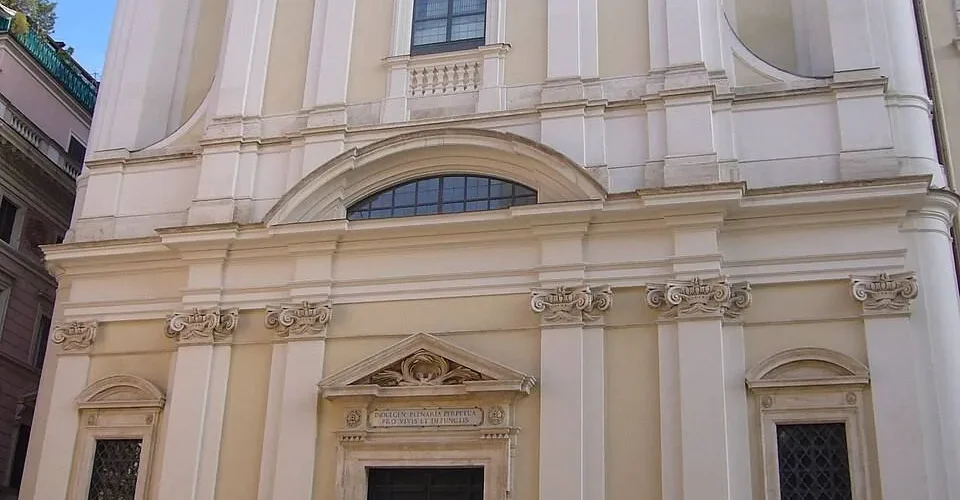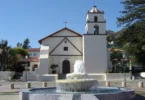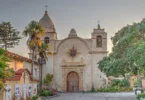Introduction
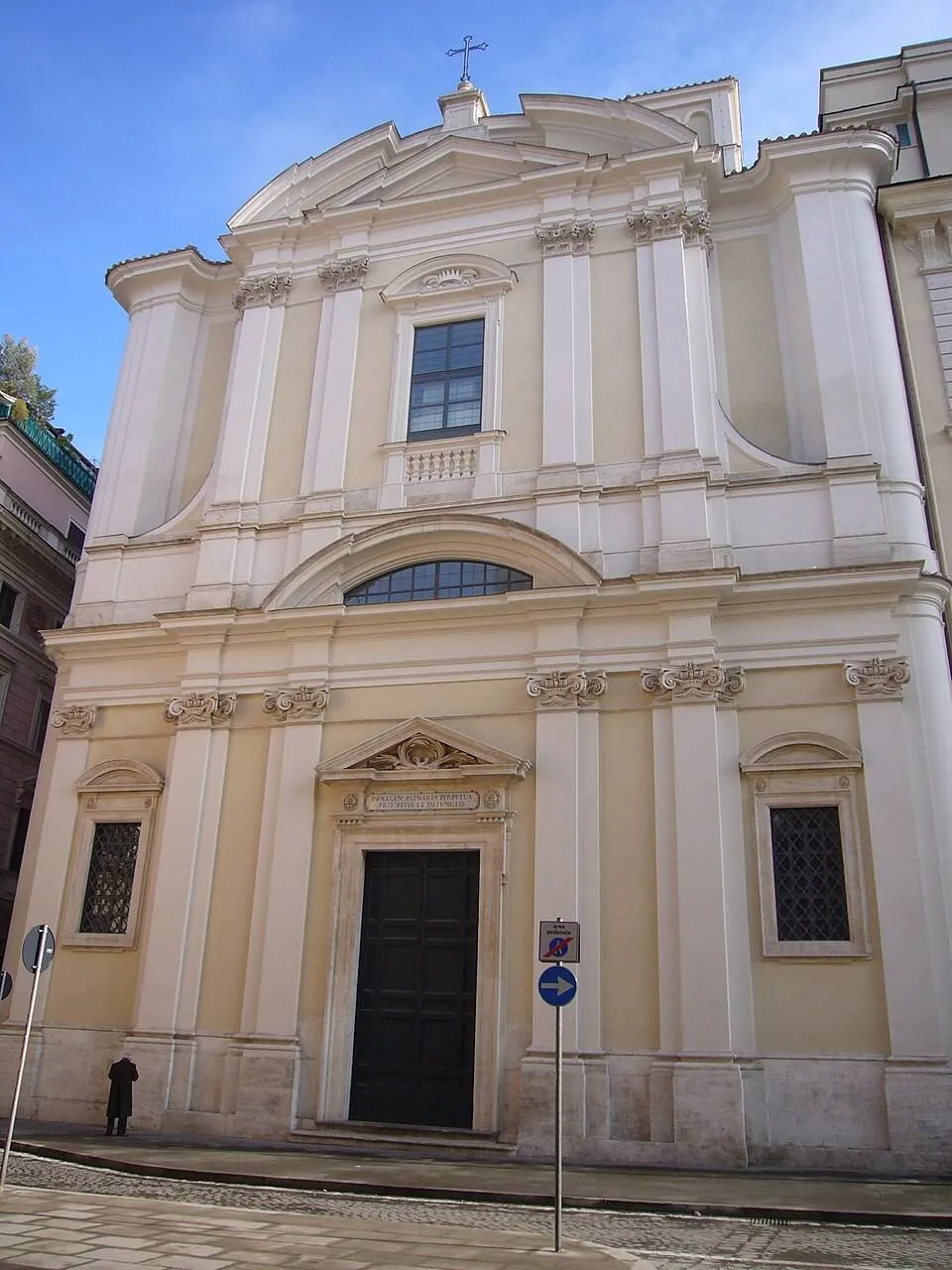
The Basilica of Sant’Apollinare alle Terme Neroniane-Alessandrine, more commonly referred to as Sant’Apollinare, is a significant Catholic church located in the heart of Rome. It holds the esteemed title of a minor basilica and is situated in the Ponte district, conveniently positioned between Piazza Navona and Palazzo Altemps. This historical church is dedicated to Saint Apollinaris, the first bishop of Ravenna, and is a notable example of Rome’s rich religious heritage. The basilica is part of an extensive complex that has served various important functions over the centuries. It has been home to several prestigious institutions, including the Collegium Germanicum et Hungaricum, the Pontifical Roman Seminary, and the Pontifical Institute of Sant’Apollinare. Today, it remains an academic hub as the seat of the Pontifical University of the Holy Cross, continuing its legacy of serving the Church and the broader academic community.
In addition to its academic significance, Sant’Apollinare is also a station church during the Lenten season. Specifically, it is the designated station church for the Thursday of the fifth week in Lent, a day of particular liturgical importance in the Catholic calendar. This tradition links the basilica with the spiritual rhythm of the Church’s liturgical year, further emphasizing its role in both the religious and cultural life of Rome. The church’s historical, academic, and spiritual contributions make it a cornerstone of Rome’s ecclesiastical landscape, revered not only for its architectural beauty but also for its deep-rooted connection to the Christian faith and the ongoing legacy of the Catholic Church.
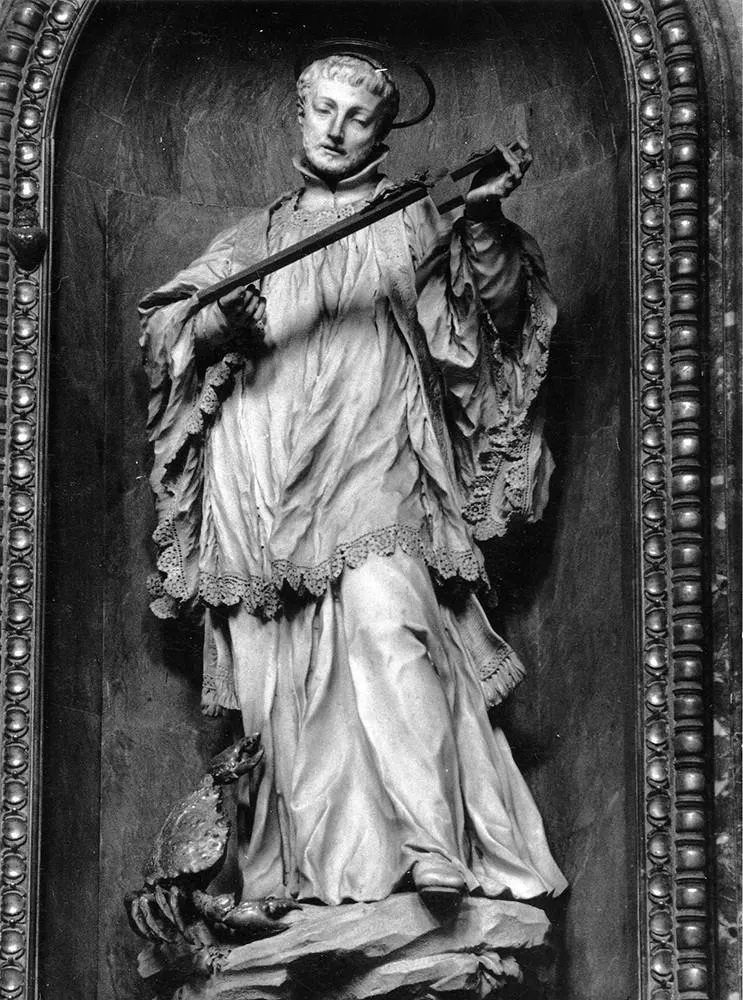
The Basilica of Sant’Apollinare alle Terme Neroniane-Alessandrine, commonly known as Sant’Apollinare, has a rich and complex history that spans over many centuries. Its origins trace back to the 8th century and it has played a central role in Rome’s ecclesiastical and cultural development. Below is a detailed account of its history, from its founding to its modern-day role.
Foundation and Early History (8th-10th Century)
Sant’Apollinare was founded by Pope Hadrian I around the year 780, constructed atop the remains of earlier Roman buildings. The church was first mentioned in the Liber Pontificalis, the official record of papal history, which provides information about Pope Hadrian’s reign and the church’s establishment. In addition, a 10th-century chronicle by the monk Benedetto del Soratte refers to a small chapel located near the baths of Nero and Alexandria, an area in which the church was situated. Pope Hadrian also founded a monastery adjacent to the church for Basilian monks fleeing religious persecution in Constantinople during the iconoclast controversy.
Medieval and Renaissance Period (13th-16th Century)
In 1284, a college of canons was established at the basilica, which was documented in historical records as an important ecclesiastical body. This college of canons continued to function until 1576. Sant’Apollinare was also elevated to a papal chapel during this time and became a parish church in 1562, reflecting its increasing role in the religious life of the city. The church’s importance continued to grow when, in 1517, Pope Leo X granted it the title of a cardinalate church, a designation that highlighted its significance within the broader Church hierarchy.
Jesuit Era and Rebuilding (16th-18th Century)
In 1574, Pope Gregory XIII granted the church to the Jesuits, and it became the place of worship for the German-Hungarian College, also known as the Collegium Germanicum et Hungaricum, which was housed in the adjacent Palazzo di Sant’Apollinare. The Jesuits maintained this connection with the basilica until their suppression in 1773. By the late 17th century, the church had fallen into disrepair, and rebuilding efforts were delayed due to a lack of funds. However, in 1742, Pope Benedict XIV commissioned the architect Ferdinando Fuga to rebuild Sant’Apollinare, and the reconstruction took place between 1742 and 1748. Fuga’s redesign transformed the church into its current form, and Pope Benedict XIV consecrated the newly rebuilt church on 21 April 1748.
19th Century and the Papal Role (19th Century)
The church continued to serve an important role in the ecclesiastical and academic life of Rome during the 19th century. From 1825, it housed the Pontifical Roman Seminary until the seminary’s relocation to the Collegio Romano in 1848. One notable event during this period was the consecration of the future Pope Pius X as bishop at Sant’Apollinare on 6 November 1884. The church’s status as a minor basilica was officially recognized in 1984.
Modern Era and Opus Dei (20th-21st Century)
In the 20th century, the basilica’s role evolved further. On 18 December 1990, the church was entrusted to the Prelature of Opus Dei, which established its Pontifical University of the Holy Cross on the premises. The Opus Dei chaplain took up residence at the church on 1 September 1991, marking a new chapter in the basilica’s history. One of the most unusual and controversial chapters in the church’s recent history occurred in 1990 when the notorious gangster Enrico “Renatino” De Pedis, leader of the Magliana gang, was buried in the basilica’s crypt. This burial, authorized by Cardinal Ugo Poletti, attracted significant media attention and led to investigations due to the links between De Pedis and the 1983 disappearance of Emanuela Orlandi, a case that remains unresolved. In 2012, following judicial investigations, the body of De Pedis was exhumed and transferred to the Prima Porta Cemetery, where it was cremated and the ashes dispersed into the sea.
Renovations and Restoration
In 2008, a long-awaited restoration project was completed, which included the church and the square in front of it. The restoration helped preserve the architectural beauty of the basilica and ensured its continued use for religious, academic, and cultural purposes.
Architecture of Basilica of St. Apollinarus, Roma, Italy
Architect: Ferdinando Fuga
Architectural Style: Renaissance architecture
The architecture of the Basilica of Sant’Apollinare reflects a rich history of artistic transitions, from the Baroque to Neoclassical styles, and incorporates numerous artistic and architectural elements that showcase the grandeur of the church. The design of the church was shaped by the vision of several architects, most notably Ferdinando Fuga, who was commissioned to rebuild the church in the mid-18th century. Here is a detailed overview of its architectural features.
Exterior Architecture
The exterior of Sant’Apollinare is a striking example of Baroque design infused with Neoclassical elements. Ferdinando Fuga’s work on the façade, completed in 1742, combines the grandeur of late 16th-century styles with Baroque influences. The façade is structured in two levels, with Ionic columns on the lower story and Corinthian columns on the upper. The lower level features a central doorway flanked by windows, above which sits a triangular tympanum. On the upper level, a large central window with a balcony is flanked by two smaller windows. The façade is crowned by a double tympanum, enhancing its dramatic presence. A distinctive feature of the exterior is the campanile, or bell tower, located nearby. The campanile is characterized by its arched openings and a pyramidal top, adding to the classical charm of the complex. Adjacent to the church is the Palazzo di Sant’Apollinare, which includes a colonnaded courtyard and Baroque fountains, one of which was designed by the renowned architect Gian Lorenzo Bernini.
The façade overlooks Piazza di Sant’Apollinare and is divided into two registers by a marble cornice. The lower register contains the portal and two side windows, while the upper register features a large window. Above this, a tympanum completes the design.
A notable element of the exterior is the atrium, which was once a portico but was transformed into a chapel. The atrium houses a 15th-century image of the Madonna, flanked by the apostles Peter and Paul. This image has a fascinating history—during the passage of French soldiers under Charles VIII in 1494, the image was covered with plaster to protect it. The plaster was forgotten until it was rediscovered in 1647 following an earthquake that caused the plaster to detach, revealing the image once more.
Interior Architecture
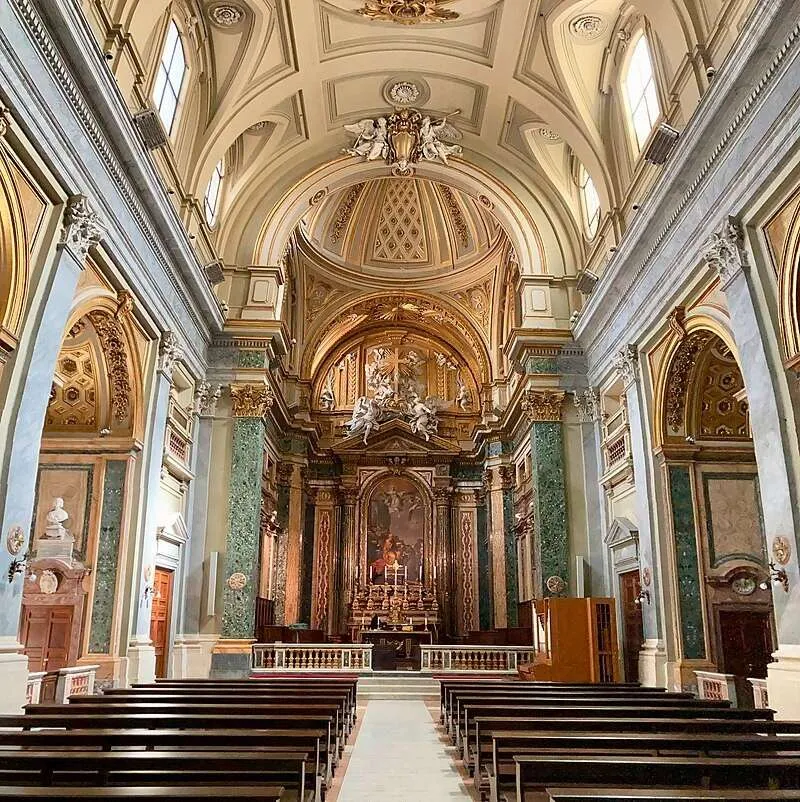
The interior of Sant’Apollinare is characterized by its elegant Baroque design, with a single nave and side chapels. The nave is decorated with a barrel-vaulted ceiling that features a fresco by Stefano Pozzi titled The Glory of St. Apollinaris, which illustrates the saint’s divine ascent. The church’s layout is simple yet grand, with pilasters supporting arches that lead to the side chapels, each dedicated to different saints. The high altar is one of the central focal points of the interior, located in the apse at the far end of the nave. The altar was commissioned by Pope Benedict XIV and features stucco decorations by Bernardino Ludovisi. The altarpiece, painted by Ercole Graziani the Younger, depicts St. Apollinaris’ consecration as Bishop of Ravenna, a theme that reflects the church’s dedication to the saint. This altarpiece is a copy of one Graziani had previously painted for Bologna Cathedral.
Along the right side of the nave, the chapels are dedicated to the saints Luigi Gonzaga, Giuseppe, and Francesco Saverio, while on the left side, chapels are dedicated to San Giovanni Nepomuceno, San Josemaría Escrivá, and Sant’Ignatius of Loyola. The altarpiece of the Chapel of San Giuseppe, painted by Jacopo Zoboli in 1748, depicts the Holy Family and is a significant piece in the church’s collection. The altarpiece of the Chapel of San Giovanni Nepomuceno, created by Placido Costanzi, is another important artwork. The dome of the basilica, completed in 1748, is a masterpiece of Baroque architecture. Designed by Ferdinando Fuga, the dome is decorated with stucco patterns based on a Greek cross, culminating in a lantern that holds a dove, representing the Holy Spirit. The triumphal arch that frames the high altar further emphasizes its central importance to the church.
The nave is paved with inlaid marble, with the names of past cardinals embedded in the flooring as a tribute to the church’s historical significance. The church also features elegant 18th-century confessionals, which provide private spaces for reflection and spiritual contemplation. Above the entrance, on a grand gallery with curved wings, is the organ, adding a rich musical element to the church’s interior.
Chapel of Graces
The elliptical Chapel of Graces, located outside the main body of the church, is accessed through a doorway on the left side. This chapel contains a significant 1494 fresco of The Virgin, Queen of Apostles, which survived the Sack of Rome in 1527. The fresco had been covered with lime whitewash by the priests to protect it from the soldiers of the sack and was later rediscovered in 1645 when an earthquake caused the plaster to fall away. A marble frame with golden stucco cherubs, designed by Peter Anton von Verschaffelt, was added around the fresco, enhancing its beauty and historical importance.
Palazzo di Sant'Apollinare
Adjacent to the basilica is the Palazzo di Sant’Apollinare, a historically significant building that has housed numerous Catholic institutions over the centuries. These institutions include the German College, the Academy of San Luca, the Pontifical Roman Seminary, and the Pontifical Institute of Sant’Apollinare. Today, the Palazzo is home to the Pontifical University of the Holy Cross, continuing its legacy as an academic and religious center. In summary, the architecture of Sant’Apollinare is a magnificent blend of Baroque and Neoclassical styles, with a harmonious design that emphasizes both grandeur and spiritual significance. The church’s interior and exterior feature a rich array of artistic works and architectural elements, all of which contribute to its status as one of Rome’s most important ecclesiastical landmarks.
Feast Day
Feast Day : 23 July
The feast day of St. Apollinaris, the patron saint of the Basilica of Sant’Apollinare, is celebrated on July 23. This day commemorates his life and martyrdom as the first bishop of Ravenna, Italy.
Church Mass Timing
Monday : 8:00 AM , 12:45 PM.
Tuesday : 8:00 AM , 12:45 PM.
Wednesday : 8:00 AM , 12:45 PM.
Thursday : 8:00 AM , 12:45 PM.
Friday : 8:00 AM , 12:45 PM.
Church Opening Time:
Monday : 7:30 am – 9:00 am., 12:00 pm – 1:30 pm.
Tuesday : 7:30 am – 9:00 am., 12:00 pm – 1:30 pm.
Wednesday : 7:30 am – 9:00 am., 12:00 pm – 1:30 pm.
Thursday : 7:30 am – 9:00 am., 12:00 pm – 1:30 pm.
Friday : 7:30 am – 9:00 am., 12:00 pm – 1:30 pm.
Saturday : Closed
Sunday : Closed
Contact Info
Address :
Basilica of St. Apollinarus
Piazza di Sant’Apollinare, 49, 00186 Roma RM, Italy.
Phone : +39 06 681641
Accommodations
Connectivities
Airway
Basilica of St. Apollinarus, Roma, Italy, to Leonardo da Vinci International Airport (FCO) Fiumicino, distance between 50 min (31.3 km) via A91.
Railway
Basilica of St. Apollinarus, Roma, Italy, to Martinucci Laboratory – Stazione termini Piazza dei Cinquecento, distance between 19 min (3.7 km) via Traforo Umberto I.

